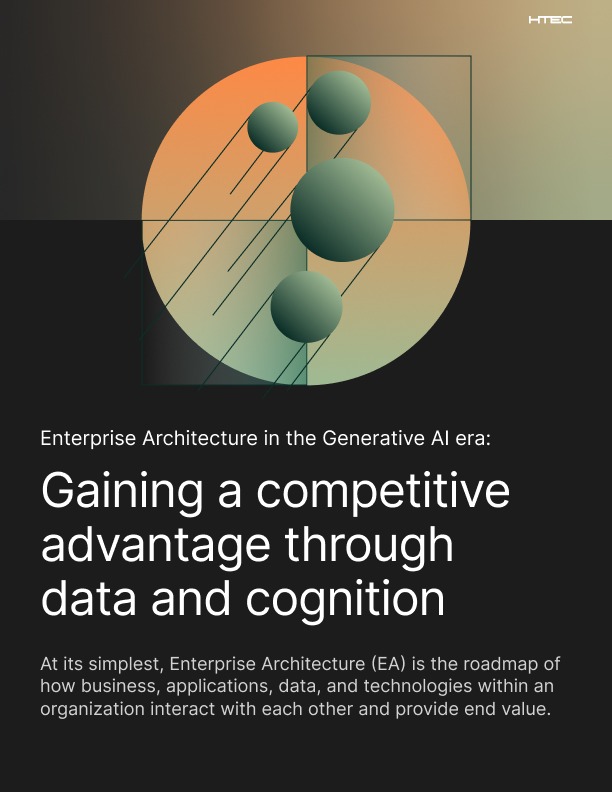Enterprise Architecture is the roadmap for the interaction of four areas within an organization – Business, Applications, Data, and Technologies. It determines how these key areas work with one another and provide business value.
Solid Enterprise Architecture ensures changes in one of the four areas are understood across the entire enterprise. This integrated approach results in improvements to the efficiency, agility, resilience, and long-term planning of an organization.
In this white paper, HTEC explores how organizations can achieve the best possible enterprise architecture through emerging AI technologies. Its three key focus areas are:
- unique needs in terms of knowledge (data) and cognition;
- a company’s current position in the “data vs. cognition” coordinate system;
- the ability of a business to evolve by climbing up both the data and cognition axes.
The power of data and cognition
Regardless of their industry and business model, enterprises rely on data to make decisions. Data and the interpretive logic behind it are increasingly becoming indispensable. This is true both for “simpler” use cases (e.g., low-level process automation) and for advanced predictive analytics.
The costs of data (the input) and cognition (the logic) are significantly dropping and effectively approaching zero. Finding the most effective way to use emerging technologies to optimize enterprises is fast becoming a key competitive edge.
Not every company is equally keen or dependent on exploring innovative ideas. By the very nature of their business, some are greater “risk takers” or “explorers” than others. Obviously, there is no one-size-fits-all solution.
Yet, there is one common trait – those businesses that do not adapt to swift shifts in their market will fall behind. Making the best use of knowledge and cognition to achieve the most adaptable enterprise architecture becomes imperative.
Curious to find out how your business can do it? Download the full white paper and find out!





